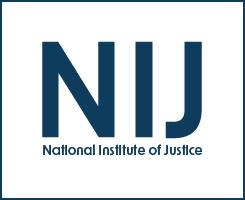National Academy of Sciences
NIJ FY24 Invited to Apply - Funding for Support for the Operations of the Committee on Law and Justice of the National Academies of Sciences, Engineering and Medicine
Forensic Science (2011)
Support Activities under Section 13(d) of Executive Order 14074: Workshops on Law Enforcement Use of Probabilistic DNA Technologies and Person-based Predictive Policing
Funding Support for the Operations of the Committee on Law and Justice of the National Academies of Sciences, Engineering, and Medicine
Can Science Enhance Equity? Findings and Implications From a Study To Detect Bruising on Victims with Dark Skin Pigmentation
This plenary panel from the 2023 NIJ Research Conference features fascinating research on a methodology to improve the detection and documentation of bruises on victims of violence who have dark skin pigmentation. This study highlights the intersection between science, justice, and racial equity, featuring practitioner and victims’ advocacy perspectives. The discussion describes the research and its findings and explore strategies to ensure that this particular evidence-based methodology can be widely implemented by nurse practitioners in the field.
Participants:
See the YouTube Terms of Service and Google Privacy Policy
Analysis of Small Particles Adhering to the Edges of Duct Tape as a Means to Make Associations in a Way that is Independent of Manufactured Characteristics
Funding Support for the Operations of the Committee on Law and Justice of the National Academies of Sciences, Engineering, and Medicine
A Century of Ballistics Comparison Giving Way to Virtual 3D Methods
Hunter-gatherer genomic diversity suggests a southern African origin for modern humans
Quantitative Measures for Footwear Impression Comparisons
Expanding Research to Examine the Impacts of Forensic Science on the Criminal Justice System
In 2004, the National Institute of Justice created the social science research on forensic sciences (SSRFS) research program to explore the impact of forensic sciences on the criminal justice system and the administration of justice. Much of the early research from the SSRFS program focused on DNA processing and the use of DNA in investigations and prosecutions.
See the YouTube Terms of Service and Google Privacy Policy
Accounting for Covariates in Forensic Error Rate Assessment and Evidence Interpretation
Bullying Prevention: A Summary of the Report of the National Academies of Sciences, Engineering, and Medicine
Results of a Black Box Study on the Accuracy and Reliability of Palm Print Comparisons
Accounting for Covariates in Forensic Error Rate Assessment and Evidence Interpretation
Design and Testing of a Computational Aid for Fire Debris Data Interpretation
Why Is the United States the Most Homicidal Nation in the Affluent World?
Ohio State University Since World War II, the homicide rate in the U.S. has been three to ten times higher than in Canada, Western Europe, and Japan. This, however, has not always been the case. What caused the dramatic change? Dr. Roth discussed how and why rates of different kinds of homicide have varied across time and space over the past 450 years, including an examination of the murder of children by parents or caregivers, intimate partner violence, and homicides among unrelated adults.
See the YouTube Terms of Service and Google Privacy Policy
Violent Repeat Victimization: Prospects and Challenges for Research and Practice
Research tells us that a relatively small fraction of individuals experience a large proportion of violent victimizations. Thus, focusing on reducing repeat victimization might have a large impact on total rates of violence. However, research also tells us that most violent crime victims do not experience more than one incident during a six-month or one-year time period. As a result, special policies to prevent repeat violence may not be cost-effective for most victims.
See the YouTube Terms of Service and Google Privacy Policy
Opening the Black Box of NIBIN
Bill King discusses the operations of the National Integrated Ballistic Information Network (NIBIN), a program through which firearms examiners at state and local crime laboratories compare tool marks on fired bullets or cartridges found at a crime scene to digitized images of ballistic evidence in a nationwide database.
See the YouTube Terms of Service and Google Privacy Policy
Less Prison, More Police, Less Crime: How Criminology Can Save the States from Bankruptcy
Professor Lawrence Sherman explains how policing can prevent far more crimes than prison per dollar spent. His analysis of the cost-effectiveness of prison compared to policing suggests that states can cut their total budgets for justice and reduce crime by reallocating their spending on crime: less prison, more police.
See the YouTube Terms of Service and Google Privacy Policy
Human Factors in Latent Print Examination
The NIJ-sponsored Expert Working Group on Human Factors in Latent Print Analysis is clarifying potential sources of error in pattern recognition analysis. It will develop best practices to remove or minimize these sources. NIJ is addressing recommendations in the 2009 National Academy of Sciences' report titled "Strengthening Forensic Science in the United States: A Path Forward." Specifically, the panelists focus on recommendation 5, which encourages research programs on human observer bias and sources of human error in forensic examinations.
See the YouTube Terms of Service and Google Privacy Policy
The Evaluation of NIJ by the National Research Council of the National Academy of Sciences: NIJ's Response
The National Academies conducted a comprehensive evaluation of the National Institute of Justice. This panel provides an overview of the evaluation and NIJ's response to it. NIJ has accepted many of the recommendations in the NRC report, and you will learn what the agency is doing to implement them. A few of the recommendations were challenging and created considerable debate within NIJ. Plans to address these thorny issues also are discussed.


